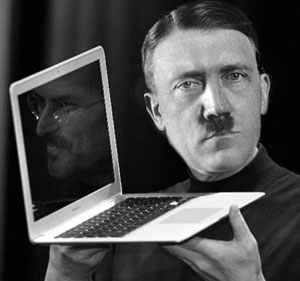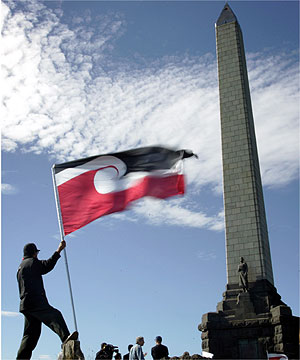 Born of War: The Commonwealth's modern promoters date its birth to July 1949. In reality, of course, the institution is inextricably linked to the British Empire - and the devastating global wars waged in its defence.
Born of War: The Commonwealth's modern promoters date its birth to July 1949. In reality, of course, the institution is inextricably linked to the British Empire - and the devastating global wars waged in its defence.
In July 2009, the Royal Commonwealth Society launched "The Commonwealth Conversation". This was both a commemoration of the 60th anniversary of the founding of the "New" Commonwealth in July 1949, and an attempt to "refresh the Commonwealth to keep it relevant and effective for the next 60 years and beyond". The New Zealand end of the "conversation" was officially launched last Wednesday evening (21 October) in the Beehive Theatrette. Alongside Professor David McIntyre and Professor James Belich, I was invited to be one of the event’s three "leading presenters". Afterwards, a number of those present asked me to post my address on Bowalley Road.
WHEN I TOLD my friends about this evening’s "conversation" most of them were rather non-plussed.
"Why bother?", one asked. "Who on earth is interested in the Commonwealth these days – apart from a dwindling band of sentimental royalists, academics specialising in international relations, and a handful of weary diplomats who don’t have any choice?"
"I hope you’re going to come out against it", said another. "It’s nothing but a historical relic from the days of empire. A fusty old heirloom that everyone’s too scared to throw out for fear of upsetting, well, who knows – Betty Windsor perhaps?"
I must confess, there was much in their objections to the Commonwealth that I agreed with.
As the generation who grew up in what their parents and the newspapers still called The British Empire dwindles and fades, and as the Baby Boom generation who thrilled to the emergence of the so-called "Third World" from colonial rule ruefully begins to contemplate the same fate, it is indeed difficult to locate any emotional anchors strong enough to keep their children and grandchildren loyal to – or even interested in – this curious institution.
In fact, the more I thought about the Commonwealth, the more it seemed to resemble bombus terrestris – the common bumble-bee – which, according to urban legend, was once pronounced by some pedantic old engineer to be so aerodynamically deficient that its sustained flight was a mathematical impossibility. Of course the bumble-bee, having no deep knowledge of aerodynamics, flies perfectly well – "under the power of its own ignorance".
Is that what keeps the Commonwealth airborne? The power of ignorance? If people truly understood what it was, and why it was – would the Commonwealth be able to keep on flying in the present tense?
How many people, I wonder, realise that, historically-speaking, there were (some say still are) two Commonwealths: the White, and the Non-white? Or that both were the unwanted offspring of the two great global conflicts of the twentieth century?
Great Britain entered the 20th Century as the world’s pre-eminent economic and military power, with a global reach only the Americans have, so far, been able to equal.
Central to the enabling and exculpatory mythologies of the British Empire was a profound and apparently ineradicable belief in the innate superiority of white men – and not just any sort of white men, either. The fate of the world – whether it realised it or not – had been reposed, by the Almighty (or the British navy) in the hands of Anglo-Saxon white men. Which meant that, as both the crucible of Anglo-Saxon civilisation, and the prime exemplar of its moral, cultural, economic and military pre-eminence, the world rightfully belonged to Great Britain.
Our own Prime Minister during that febrile period leading up to the outbreak of World War I, William Fergusson Massey, took this view of the world to its logical extreme by enlisting in the ranks of the British Israelites. These were the folk who genuinely believed that Britain’s King-Emperor was directly descended from the Lion of Judah, and that the Britons themselves were the direct descendants of a lost tribe of peripatetic Israelites who, for reasons best known to themselves, had abandoned the land of milk and honey for the land of cold and clammy – but I digress.
The First World War, as we all know, transformed Great Britain from the world’s pre-eminent creditor nation, into America’s poor (and deeply indebted) relation. Even worse, it created the conditions for the world’s first socialist republic – a republic implacably hostile to imperialism in all its forms.
So dangerous was the new Bolshevik state in the eyes of the capitalist world that its new leader, the United States, felt obliged to offer the world’s peoples at least the prospect of self-determination.
It wasn’t an idea that went down particularly well at the Foreign and Colonial Office in London, but, with an alarmingly large number of the British working-class cheerily whistling the Internationale on their way t’mill, it was one which the Powers-That-Be were, eventually, required to acknowledge.
Hence the famous Balfour declaration of 1926 (not to be confused with the infamous Balfour Declaration of 1917). This made it clear to the Anglo-Saxon portions of the Empire that, henceforth:
"They are autonomous Communities within the British Empire, equal in status, in no way subordinate one to another in any aspect of their domestic or external affairs, though united by a common allegiance to the Crown, and freely associated as members of the British Commonwealth of Nations."
Which only seems fair - given the hundreds of thousands of young Irishmen. Canadians, Newfoundlanders, Australians, South Africans and New Zealanders who’d died to make Great Britain master of the Persian Gulf – and its oil.
Thus were the "young lions" of the Dominions inducted into what amounted to a very exclusive and racially privileged, "club" within the greater British Empire. Never mind that their head of state remained a progeny of the House of Windsor (Saxe-Coburg sounded so horribly German don’t you know) or that most of their key industries were British-owned, or that virtually all of their capital hailed from the City of London. After the 1931 Statute of Westminster the Empire’s "young lions" could prowl wherever they pleased.
Few members of the new British Commonwealth of Nations appear to have given much thought to the fact that if they were free of Britain, then she, too, must be free of them. It was only when the imperial Japanese fleet was bearing down on Australia and New Zealand in the early months of 1942 that Britain’s former colonies grasped the full extent of their "autonomy".
But if Britain entered World War I in the spirit of "wider still and wider, shall thy bounds be set", she faced down Hitler’s Germany in the considerably less hubristic, but infinitely more likeable spirit of, "there’ll always be an England".
"Let us therefore brace ourselves to our duties," intoned the British Empire’s last great statesman, "and so bear ourselves that if the British Empire and its Commonwealth last for a thousand years, men will still say, ‘This was their finest hour.’"
"Finest hour" it certainly was, but the thousand-year-empire which Churchill, that arch-imperialist, was still brazen enough to invoke in his most famous speech, would be gone within quarter-of-a-century.
Maybe it was simply the curse of karma (a concept imported from that jewel in the imperial British crown, long-suffering India) that the price which Britain, along with all the other great imperial powers, would be required to pay for drowning the world in blood to expand their empires – would be to lose their empires altogether.
What made the loss so much easier to bear, of course, was the fact that if the British Empire was no longer a sustainable proposition, its successor, the Anglo-Saxon Empire, was approaching its zenith.
In 1945, Capitalism’s cornucopia, protected by its new atomic sword, was the United States of America. It bestrode the world like a gum-chewing colossus. And at its side, ready to help it challenge that other great winner of World War II, the Soviet Union, were its loyal (and very grateful) English-speaking allies – Great Britain, Canada, Australia and New Zealand.
The five fingers of the Anglo-Saxon fist.
And in a world where it paid to keep your friends close and your enemy’s potential friends even closer, the US State Department could see that the rapidly disintegrating British Empire had a vital role to play in keeping its former colonies out of the clutches of the dreaded communists.
Enter the "New Commonwealth" – the British Foreign Offices’ highly successful mechanism for preventing its former subject peoples from turning red – by keeping them pink.
But, the new nations of what would become, simply, "The Commonwealth", remained bound to the old family firm by more than the ties of history, language and sentiment. Like the white dominions before them, their economies were built on a foundation of British capital, and their fledgling armies kitted out with the latest in British military hardware.
And as the playwright Anton Chekov so acutely observed: "If you hang a gun on the wall in the first act, you must use by the last."
The new phenomenon of "neo-colonialism" may have relieved Western Imperialism of the "white man’s burden" of permanent military garrisons and pukka-sahib District Officers, but through a judicious mix of foreign direct investment, loans and aid (often amounting to the same thing) not to mention an entertaining cast of military strongmen, the peoples of the vanished empire remained subjects still.
It has hardly been a glorious history. Whether it be the vast crime against humanity that was the partition of India; or the extra-judicial killings of 1950s Kenya; or the cynical Nelsonian eye turned to the anguish and suffering of Biafra; or the disgraceful and deeply racist machinations of British Intelligence in the extended tragedies of Southern Africa and Rhodesia – tragedies in which successive governments of this Commonwealth member played a not inconsiderable and entirely disreputable part – the history of the Commonwealth "family", like the history of most great families in decline, is not a happy one.
And yet, the old bumble-bee continues to fly.
Though history warns me against the testimony of human memory, when it comes to the Commonwealth one memory in particular endures.
It is of the closing ceremony of the 1974 Commonwealth Games in Christchurch, New Zealand, when hundreds of athletes and spectators, unburdened by the fears of terrorism which, in today’s climate, would make such a spectacle quite impossible, crowded around the Queen’s and Prince Philip’s open land-rover, laughing and singing and dancing in a joyous celebration of human solidarity – and yes, even love.
It is this special talent of Britannia, and all her brood, to transcend the sins which made them, if not by the power of their own ignorance, then certainly by the power of the great historical romance in which each one of them has played their part, that makes the Commonwealth so curiously effective among all the dilapidated international contraptions of our battered age.
And it is why, for all its faults, I would not see it fall.
 A deficit of political will: Free Trade orthodoxy is but one of neoliberalism's many economic and political shibboleths. With the political elites of both the centre-left and the centre-right espousing the same dogma, Western electorates are seldom exposed to alternative explanations for, or solutions to, besetting global problems.
A deficit of political will: Free Trade orthodoxy is but one of neoliberalism's many economic and political shibboleths. With the political elites of both the centre-left and the centre-right espousing the same dogma, Western electorates are seldom exposed to alternative explanations for, or solutions to, besetting global problems.











